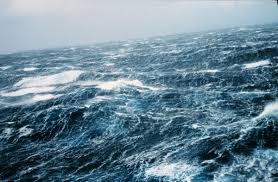 Extra heat from greenhouse gases has been trapped in the waters of the Pacific and Indian oceans in recent years, which may explain the so-called 'pause' in global warming observed during the past decade, according to a new NASA study.
Extra heat from greenhouse gases has been trapped in the waters of the Pacific and Indian oceans in recent years, which may explain the so-called 'pause' in global warming observed during the past decade, according to a new NASA study.
Researchers from NASA's Jet Propulsion Laboratory, California, found a specific layer of the Indian and Pacific oceans between 100 and 300 metres below the surface has been accumulating more heat than previously recognised.
During the 20th century, as greenhouse gas concentrations increased and trapped more heat energy on Earth, global surface temperatures also increased. However, in the 21st century, this pattern seemed to change temporarily.
"Greenhouse gases continued to trap extra heat, but for about 10 years starting in the early 2000s, global average surface temperature stopped climbing, and even cooled a bit," said researcher Josh Willis.
In the study, researchers analysed direct ocean temperature measurements, including observations from a global network of about 3,500 ocean temperature probes known as the Argo array.
These measurements show temperatures below the surface have been increasing.
The Pacific Ocean is the primary source of the subsurface warm water found in the study, though some of that water now has been pushed to the Indian Ocean.
Since 2003, unusually strong trade winds and other climatic features have been piling up warm water in the upper 1,000 feet of the western Pacific, pinning it against Asia and Australia.
"The western Pacific got so warm that some of the warm water is leaking into the Indian Ocean through the Indonesian archipelago," said Veronica Nieves, lead author of the study.
The movement of the warm Pacific water westward pulled heat away from the surface waters of the central and eastern Pacific, which resulted in unusually cool surface temperatures during the last decade.
Because the air temperature over the ocean is closely related to the ocean temperature, this provides a plausible explanation for the global cooling trend in surface temperature.
Cooler surface temperatures also are related to a long-lived climatic pattern called the Pacific Decadal Oscillation, which moves in a 20 to 30 year cycle.
It has been in a cool phase during the entire time surface temperatures showed cooling, bringing cooler-than-normal water to the eastern Pacific and warmer water to the western side.
There currently are signs the pattern may be changing to the opposite phase, with observations showing warmer-than-usual water in the eastern Pacific.
"Given the fact the Pacific Decadal Oscillation seems to be shifting to a warm phase, ocean heating in the Pacific will definitely drive a major surge in global surface warming," Nieves said.
The study was published in the journal Science.











 © 2025
© 2025